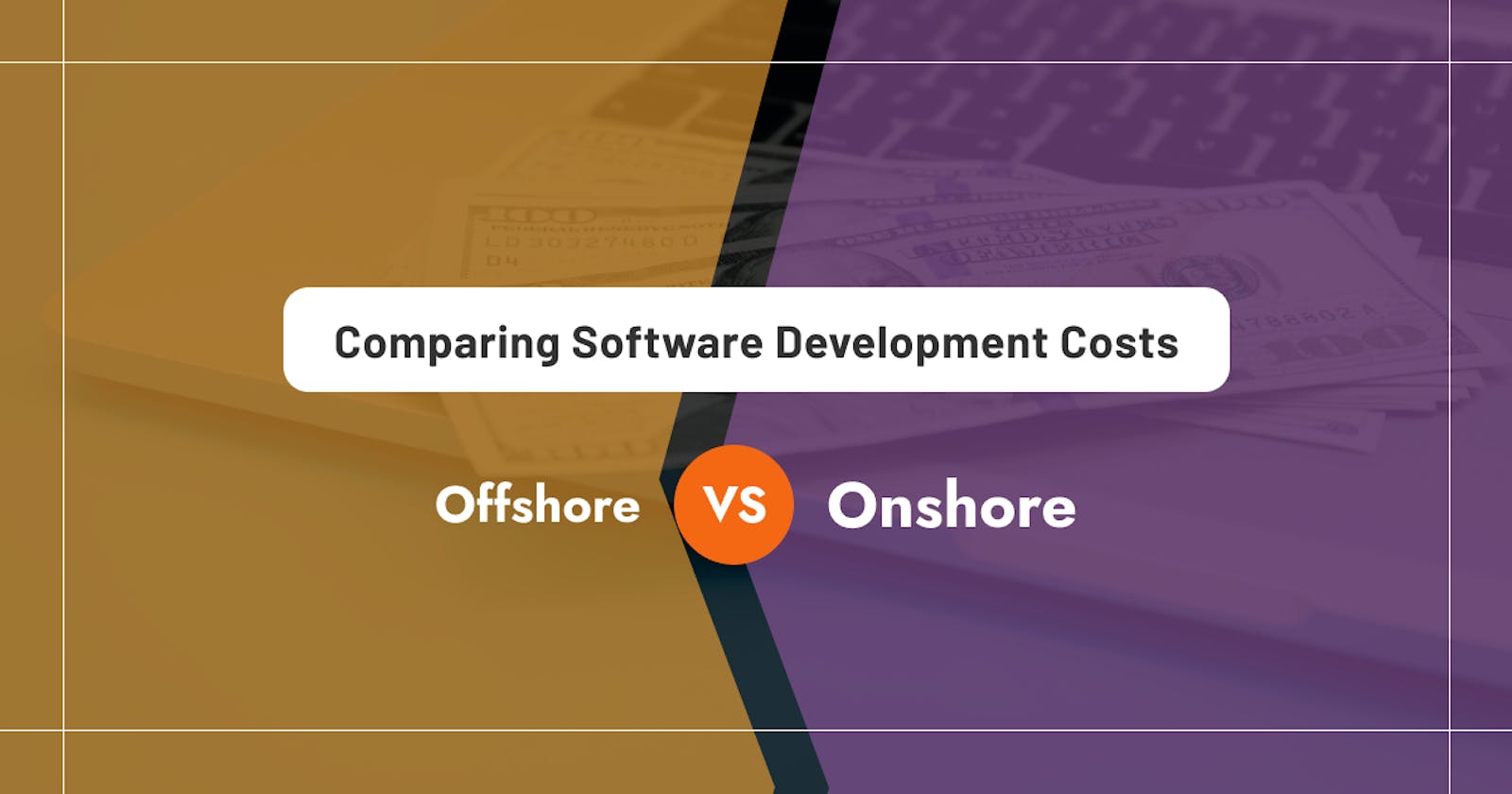Introduction
Navigating the complexities of software development often involves weighing the pros and cons of offshore versus onshore approaches, with cost being a critical factor. Businesses in today's globalized economy frequently grapple with this decision, seeking to optimize expenses while ensuring quality and efficiency. In this blog post, we'll explore the nuances of offshore and onshore software development, dissect the cost differentials using a specialized software development cost calculator, and offer valuable insights to empower your decision-making process.
Difference between Offshore and Onshore Software Development
Offshore Software Development: Offshore software development involves outsourcing software development tasks to a team located in a different country, typically one with lower labor costs. This approach offers potential cost savings and access to a broader talent pool but can present challenges related to communication, time zone differences, and cultural barriers.
Onshore Software Development: Onshore software development, on the other hand, refers to keeping development activities within the same country as the business. While this approach may come with higher labor costs, it offers advantages such as easier communication, better alignment with business practices and regulations, and potentially higher quality due to closer collaboration.
Cost Analysis for Offshore Vs Onshore
To compare offshore and onshore operation costs, analyze factors such as labor, regulations, infrastructure, transport, and risks. Below are key considerations for both:
Labor Costs:
Offshore: Offshore labor costs vary by location, sometimes lower than onshore wages. However, specialized skills and certifications can increase expenses.
Onshore: Labor costs are generally predictable, subject to local labor laws, and can benefit from onshore operations with easier access to skilled workers and reduced transportation expenses.
Regulatory Requirements:
Offshore: Doing work offshore means following strict rules for safety, the environment, and maritime laws. This can mean spending more money on equipment, training, and keeping an eye on things.
Onshore: Rules for land work aren't as tough as for offshore, but they still cost a lot, especially in industries focused on safety or the environment.
Infrastructure Expenses:
Offshore: Setting up offshore infrastructure, like platforms and pipelines, needs a big initial investment. And because it's exposed to harsh marine conditions, keeping it running costs more too.
Onshore: Infrastructure for land operations varies by industry and location. While cheaper initially than offshore, ongoing maintenance remains costly.
Transportation Costs:
Offshore: Getting people, gear, and supplies to offshore sites adds extra challenges and costs, like chartering vessels, buying fuel, and hiring offshore support.
Onshore: Moving stuff for onshore operations costs less because you don't need offshore vessels. But in remote or hard-to-reach places on land, transportation costs can still be high.
Risks:
Offshore: Offshore work carries risks like bad weather and equipment failures. To handle them, companies invest in safety, emergency plans, and insurance.
Onshore: Onshore operations have risks like natural disasters and supply chain disruptions, but they're generally more manageable than offshore risks. Plus, it's easier to maintain and repair onshore facilities.
Key Considerations for Choosing Between Offshore and Onshore Development
Deciding between offshore and onshore development for a software project weighing the options between offshore and onshore development is crucial, particularly concerning software development costs. Here are some key considerations for making this decision:
1. Cost: Offshore typically offers lower software development costs due to reduced labor expenses in regions like India, Eastern Europe, or Southeast Asia. Yet, it's vital to account for supplementary costs such as travel, communication, and potential quality assurance issues.
2. Quality and Expertise: Onshore teams excel in quality and expertise due to education and experience, while offshore teams, though skilled, require thorough vetting to match project needs and control software development costs.
3. Communication and Time Zone Differences: Onshore teams share the client's time zone, aiding communication. Offshore teams face challenges due to time zone differences, potentially affecting software development costs.
4. Cultural and Language Differences: Offshore development teams, operating in diverse cultural contexts and languages, may encounter misunderstandings, impacting software development costs. Onshore teams, sharing common cultural norms and language proficiency, typically experience fewer communication barriers, potentially reducing costs.
5. Project Complexity and Scope: Onshore development is preferred for complex projects requiring close collaboration, potentially influencing software development costs. Offshore development may suit well-defined projects with minimal client interaction, which could impact software development costs differently.
6. Data Security and Intellectual Property Protection: Onshore development often provides stronger data security and intellectual property protection due to strict regulations. Offshore development demands thorough due diligence to ensure compliance, impacting software development costs.
7. Previous Experience and References: Consider your organization's previous experience with offshore or onshore development partners, as well as references from other clients. Learning from past projects can help identify potential pitfalls and select the most suitable development approach for your current project.
Conclusion
Choosing between offshore and onshore software development involves weighing cost savings against communication and quality. Onshore guarantees better communication and quality but at a higher cost. Use a software development cost calculator to make an informed decision based on project needs and budget constraints.

